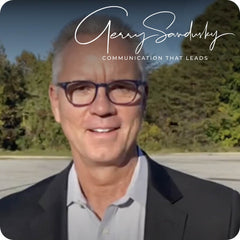Multimediale Inhalte sind ein Leuchtturm der Kreativität und des Fortschritts in der Interaktion auf dem sich ständig verändernden Terrain der digitalen Kommunikation. Als digitale Vermarkter und Anbieter von Inhalten werden Ihre Kampagnen durch Ihre Fähigkeit, verschiedene Multimedia-Formate - von interaktiven Grafiken bis hin zu Filmen und Podcasts - zu nutzen, verwandelt und die Zuschauer wie nie zuvor gefesselt. Dieser Beitrag befasst sich mit dem Kern multimedialer Materialien und liefert Ideen und Techniken zur Verbesserung Ihrer Darstellung und zur Steigerung des Profils Ihres Unternehmens in einem umkämpften digitalen Umfeld.
Was sind multimediale Inhalte?
Durch die Kombination einer Vielzahl von Medienelementen - Text, Audio, Fotos, Animationen und Video - sind multimediale Inhalte eine dynamische Form der Kommunikation die ein reichhaltiges und interessantes Nutzererlebnis bietet. Diese vielfältige Methode ermöglicht es Künstlern, verschiedene Publikumsgeschmäcker und Lernstile durch eine interaktivere und fesselndere Vermittlung von Wissen zu befriedigen. Multimediale Inhalte können das Erzählen von Geschichten verbessern, das Behalten von Informationen steigern und eine engere Beziehung zu den Zuschauern aufbauen, indem sie viele Medienformen einbeziehen. Multimediale Inhalte sind ein großartiges Instrument, um zu faszinieren und aufzuklären, egal ob sie im Marketing, in der Bildung, in der Unterhaltung oder für persönliche Projekte eingesetzt werden; sie sind daher ein wesentlicher Bestandteil der heutigen digitalen Kommunikation.
Warum sind multimediale Inhalte wichtig?
Multimediale Inhalte sind von wesentlicher Bedeutung, da sie die Präsentation und den Konsum von Wissen verbessern und dadurch die Wirkung, das Engagement und das Erinnerungsvermögen des Wissens zu steigern. Die Einbeziehung verschiedener Medienformen trägt dazu bei, unterschiedliche Lernstile und -vorlieben zu berücksichtigen, und stellt somit sicher, dass die Kommunikation ein größeres Publikum anspricht. Diese Anpassungsfähigkeit verbessert die Benutzererfahrung, da interaktives und ästhetisch ansprechendes Material in der Regel mehr Aufmerksamkeit erregt als herkömmliche textbasierte Kommunikation. Multimedia-Inhalte verschaffen Unternehmen, Lehrkräften und Autoren von Inhalten einen Wettbewerbsvorteil, da sie fesselnde Geschichten vermitteln, schwierige Sachverhalte erklären und eine emotionale Bindung zu ihrem Publikum aufbauen können. In einer Zeit, in der die Aufmerksamkeitsspanne immer kürzer wird, ist multimediales Material ein notwendiges Instrument, um das Interesse des Publikums zu wecken und zu erhalten.
Was sind die verschiedenen Arten von Multimedia-Inhalten?
Videos
Videos sind eine leistungsstarke Form von Multimedia-Inhalten, die bewegte Bilder und Ton kombinieren, um Botschaften dynamisch und ansprechend zu vermitteln. Sie können von kurzen Clips und Anleitungen bis hin zu abendfüllenden Dokumentationen und Werbematerialien reichen. Videos eignen sich hervorragend zum Erzählen von GeschichtenSie eignen sich hervorragend, um Geschichten zu erzählen, Produkte zu demonstrieren und die Aufmerksamkeit des Publikums auf verschiedenen Plattformen wie sozialen Medien, Websites und E-Learning-Umgebungen zu wecken.
Audio
Audioinhalte wie Podcasts, Musik und Voiceover bieten ein Hörerlebnis, das auch unterwegs konsumiert werden kann. Sie sind ein hervorragendes Medium für die Vermittlung von Informationen, Unterhaltung und Bildung, ohne dass visuelle Aufmerksamkeit erforderlich ist. Audioinhalte können andere Medienformen wie Videos und Präsentationen aufwerten, indem sie ihnen durch Soundeffekte und Erzählungen Tiefe und Emotionen verleihen.
Bilder
Bilder, einschließlich Fotos, Illustrationen und Infografiken, sind ein grundlegender Bestandteil von Multimedia-Inhalten. Sie können komplexe Informationen schnell und effektiv vermitteln und sind daher ideal, um die Aufmerksamkeit zu wecken und das Verständnis zu fördern. Hochwertige Bilder können Emotionen wecken, Geschichten erzählen und den Text ergänzen, um ein intensiveres Erlebnis für das Publikum zu schaffen.
Animationen
Animationen erwecken statische Bilder durch Bewegung und Interaktivität zum Leben und ermöglichen eine effektive Visualisierung komplexer Konzepte. Sie sind besonders nützlich, um komplexe Konzepte zu erklären, Daten zu visualisieren und ansprechende Inhalte für Bildungs- und Unterhaltungszwecke zu erstellen. Animationen können von einfachen GIFs bis hin zu komplizierten 3D-Modellen reichen, und bieten unendliche Möglichkeiten für Kreativität und Ausdruck.
Interaktive Inhalte
Interaktive Inhalte, wie z. B. Quiz, Umfragen und interaktive Infografiken, laden das Publikum zur Teilnahme und zum Engagement ein. Diese Art von Inhalten ermutigt die Nutzer, sich aktiv mit dem Material auseinanderzusetzen, was zu höheren Verweildauerquoten und einem individuelleren Erlebnis führt. Interaktive Inhalte eignen sich besonders gut für den Bildungsbereich und für Marketingkampagnen, bei denen die Einbeziehung der Nutzer zu tieferen Verbindungen und Erkenntnissen führen kann.
Handschriftliche Unterschriften und Logos
Handschriftliche Unterschriften und Logos verleihen Multimedia-Inhalten eine persönliche und authentische Note. Sie können ein Gefühl von Individualität und Markenidentität vermitteln, was sie zu einem wertvollen Aktivposten bei Branding- und Marketingmaßnahmen macht. Handschriftliche Elemente können in digitale Inhalte integriert werden, um einen einzigartigen und einprägsamen Eindruck zu schaffen und die Markenbekanntheit und das Vertrauen zu stärken.
Was sind die Vorteile von Multimedia-Inhalten?
- Verbessertes Engagement: Multimediale Inhalte fesseln die Aufmerksamkeit des Publikums effektiver als herkömmliche textbasierte Inhalte. Durch die Kombination von Bild, Ton und Interaktivität entsteht ein intensiveres Erlebnis, das die Nutzer dazu anregt, sich länger und intensiver mit dem Material zu beschäftigen.
- Verbessertes Behalten von Informationen: Indem sie mehrere Sinne ansprechen, tragen multimediale Inhalte dazu bei, das Lernen und die Merkfähigkeit zu verbessern. Visuelle, akustische und interaktive Elemente wirken zusammen, um komplexe Informationen verständlicher und einprägsamer zu machen, was für Bildungs- und Schulungsumgebungen von Vorteil ist.
- Breiteres Publikum erreichen: Multimediale Inhalte entsprechen den unterschiedlichen Präferenzen und Lernstilen des Publikums und machen sie einer größeren Zahl von Menschen zugänglich. Ob durch Videos, Podcasts oder interaktive Grafiken - sie sorgen dafür, dass die Botschaften bei den verschiedenen Publikumsgruppen ankommen.
- Stärkere emotionale Bindung: Die Kombination verschiedener Medienelemente, darunter auch Video, ermöglicht ein stärkeres Storytelling und eine stärkere emotionale Bindung. Multimediale Inhalte können Emotionen wecken und eine Verbindung zum Publikum aufbauen, was sie zu einem effektiven Instrument für Markenerzählungen und Kampagnen macht.
- Erhöhte Teilbarkeit und Viralität: Fesselnde und visuell ansprechende Multimedia-Inhalteeinschließlich Videos, werden mit größerer Wahrscheinlichkeit über soziale Medienplattformen geteilt, was ihre Reichweite und ihr Potenzial zur Verbreitung erhöht. Dies erhöht die Sichtbarkeit der Marke und kann zu einem größeren Publikumswachstum und mehr Interaktion führen.
Was ist der Unterschied zwischen Multimedia-Inhalten und herkömmlichen Inhalten?
Der Hauptunterschied zwischen multimedialen Inhalten und traditionellen Inhalten liegt in der Integration von verschiedenen Medienformaten und nicht in der Beschränkung auf ein einziges Medium. Bei traditionellen Inhalten handelt es sich in der Regel um textbasierte Materialien wie Artikel, Berichte oder Bücher, die Informationen allein durch geschriebene Worte vermitteln. Im Gegensatz dazu kombinieren multimediale Inhalte Text mit anderen Elementen wie Bildern, Audio, Video und interaktiven Funktionen, um ein reichhaltigeres, fesselnderes Erlebnis zu schaffen. Durch diese Integration können multimediale Inhalte mehrere Sinne ansprechen, was das Engagement des Benutzers und das Behalten der Informationen fördert. Während herkömmliche Inhalte oft linear und statisch sind, bieten multimediale Inhalte dynamische und interaktive Erlebnisse, wodurch sie sich besser an die unterschiedlichen Präferenzen des Publikums anpassen lassen und die Aufmerksamkeit im digitalen Zeitalter besser auf sich lenken.
Was macht multimediale Inhalte so wirkungsvoll?
Multimediale Inhalte sind effektiv, weil sie die Synergie mehrerer Medienelemente nutzen, um ein umfassendes und ansprechendes Kommunikationserlebnis zu schaffen. Durch die Kombination von Text, Bildern, Audio, Video und interaktiven Funktionen werden verschiedene Lernstile und -vorlieben angesprochen und sichergestellt, dass die Botschaften nicht nur gesehen, sondern auch gefühlt und verstanden werden. Dieser vielseitige Ansatz verbessert Geschichtenerzählen und Visualisierungund macht komplexe Informationen leichter zugänglich und einprägsamer. Darüber hinaus fördern multimediale Inhalte emotionale Bindungen und regen zur aktiven Teilnahme an, was zu einer höheren Einbindung und Behaltensquote führen kann. Die plattform- und geräteübergreifende Anpassungsfähigkeit von Multimedia-Inhalten erhöht ihre Reichweite und Wirkung und macht sie zu einem unverzichtbaren Instrument für Pädagogen, Marketingfachleute und Autoren von Inhalten, die ihr Publikum auf sinnvolle Weise fesseln und beeinflussen wollen.
Sollten Multimedia-Inhalte personalisiert werden?
Ja, Multimedia-Inhalte sollten personalisiert werden, um ihre Wirkung und Relevanz für das Publikum zu maximieren. Bei der Personalisierung werden die Inhalte auf die spezifischen Vorlieben, Interessen und Bedürfnisse der einzelnen Nutzer oder Zielgruppen zugeschnitten. Dieser Ansatz steigert das Engagement der Nutzer, indem er den Inhalt beziehungsreicher und aussagekräftiger macht. Die Einbindung personalisierter Elemente, wie z. B. angepasste Videobotschaften oder interaktive Funktionen, die sich an die Eingaben des Nutzers anpassen, kann die Interaktion und Zufriedenheit des Publikums erheblich steigern. Handschriftliche Unterschriftenfügen digitalen Inhalten eine einzigartige und persönliche Note hinzu, verstärken die Authentizität und bauen eine stärkere Verbindung mit dem Publikum auf. Durch die Nutzung von Dateneinblicken und Nutzerfeedback können Inhaltsersteller multimediale Erlebnisse schaffen, die auf einer persönlichen Ebene ankommen und letztlich durch die effektive Erstellung von Inhalten ein stärkeres Engagement und eine stärkere Loyalität fördern.
Häufige Fehler, die bei Multimedia-Inhalten zu vermeiden sind
- Überfrachtung mit Elementen: Multimediale Inhalte leben zwar von ihrer Vielfalt, aber eine Überfrachtung mit zu vielen Elementen - z. B. übermäßige Animationen, Sounds oder Grafiken - kann das Publikum überwältigen und ablenken. Es ist wichtig, ein Gleichgewicht zu finden und sicherzustellen, dass jede Komponente einen klaren Zweck erfüllt und die Gesamtbotschaft verbessert.
- Vernachlässigung der Zugänglichkeit: Wenn Sie Multimedia-Inhalte nicht zugänglich machen, können Sie einen großen Teil Ihres Publikums verprellen. Stellen Sie sicher, dass Videos mit Untertiteln versehen sind, dass Bilder mit Alt-Text versehen sind und dass interaktive Elemente für Nutzer mit Behinderungen navigierbar sind, und halten Sie sich an die Zugänglichkeitsstandards, um ein integratives Erlebnis zu schaffen.
- Vernachlässigung der mobilen Optimierung: Angesichts der wachsenden Zahl von Nutzern, die über mobile Geräte auf Inhalte zugreifen, kann die Vernachlässigung der mobilen Optimierung Ihre Reichweite stark einschränken. Stellen Sie sicher, dass Multimediainhalte responsive sind und auf verschiedenen Bildschirmgrößen und Geräten gut funktionieren, um Engagement und Benutzerfreundlichkeit aufrechtzuerhalten.
- Fehlen einer kohärenten Erzählung: Multimediale Inhalte sollten eine zusammenhängende Geschichte erzählen, bei der jedes Element die anderen ergänzt. Unzusammenhängende oder schlecht integrierte Komponenten können das Publikum verwirren und die Botschaft verwässern. Konzentrieren Sie sich darauf, eine nahtlose Erzählung zu erstellen, die das Publikum durch den Inhalt führt.
- Vergessen, die Leistung zu messen: Ohne die Leistung von Multimedia-Inhalten zu verfolgen und zu analysieren, ist es schwierig, ihre Effektivität oder verbesserungswürdige Bereiche zu verstehen. Nutzen Sie Analysetools, um die Engagement-Metriken zu überwachen, Feedback zu sammeln und Ihre Content-Strategie für bessere Ergebnisse zu verfeinern.
Schlussfolgerung
Zusammenfassend lässt sich sagen, dass multimediale Inhalte eine transformative Kraft im Bereich der digitalen Medien und der Kommunikation darstellen und unvergleichliche Möglichkeiten für Engagement, Geschichtenerzählen und Verbindung bieten. Durch die Integration verschiedener Medienelemente wird das Publikum nicht nur in den Bann gezogen, sondern auch das Verständnis und die Behaltensleistung verbessert, was sie zu einem unschätzbaren Werkzeug in verschiedenen Bereichen macht - von Marketing und Bildung bis hin zur Unterhaltung und darüber hinaus. In einer zunehmend digitalen Welt wird die Fähigkeit, überzeugende Multimedia-Erlebnisse zu schaffen, für jeden, der einen bleibenden Eindruck hinterlassen will, unerlässlich. Indem sie häufige Fallstricke vermeiden und auf Personalisierung, Zugänglichkeit und strategisches Storytelling setzen, können Inhaltsersteller das volle Potenzial von Multimedia-Inhalten nutzen, um ihr Publikum auf sinnvolle Weise zu inspirieren, zu informieren und zu engagieren.
Abschließende Überlegungen
Wie können Sie Ihre multimedialen Inhalte personalisieren, um sich in einem überfüllten Markt abzuheben? Artlogo bietet die ideale Lösung mit seinen einzigartigen Elementen, wie handschriftliche Unterschriften, Visitenkartenund Social-Media-Symbole. Unsere fachkundigen Designs sind darauf zugeschnitten, einen bleibenden Eindruck zu hinterlassen, damit Ihr Unternehmen Aufmerksamkeit erregt. Entfesseln Sie die transformative Kraft von Artlogo und verbessern Sie noch heute Ihre Markenpräsenz.
Quellen






























Teilen zu: